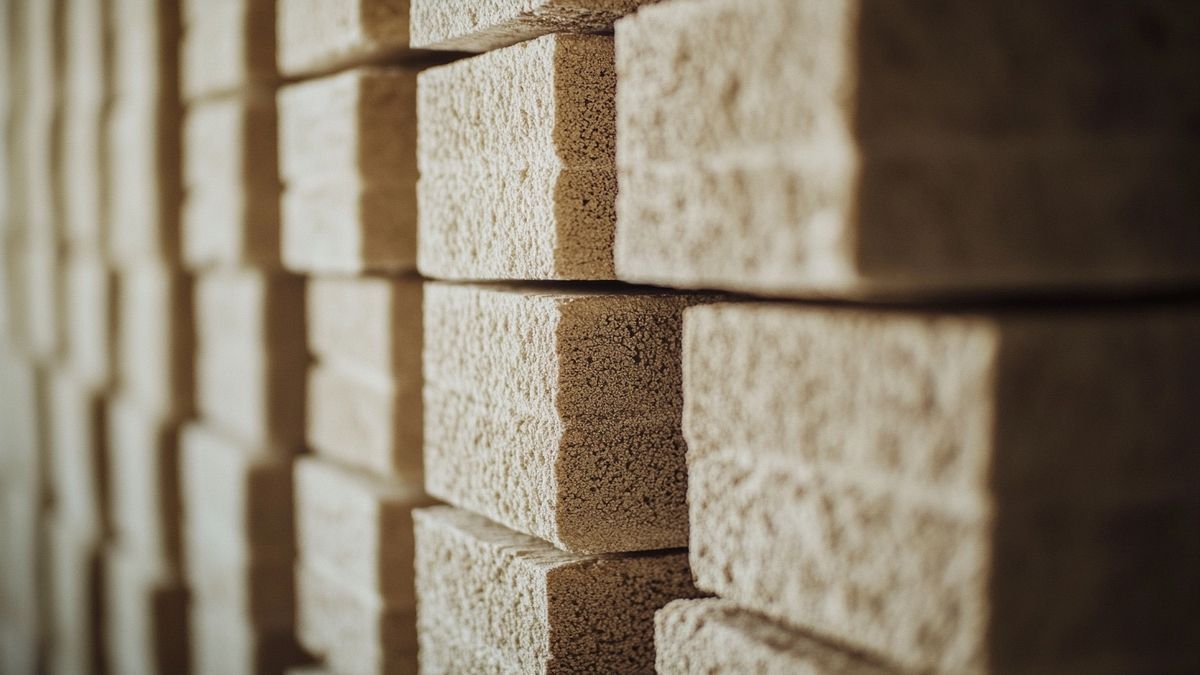The fireplace hearth, a central element of many homes, is often the subject of particular attention during its design. The question of the appropriate materials to use in its construction can guide not only the aesthetics of the space, but also its functionality. The diversity of materials available, combined with their specific characteristics, offers a multitude of options worth exploring.
Chimney materials: varied options for a successful project
Concrete: robustness and durability
Concrete is a popular choice for building a fireplace hearth, thanks to its strength and longevity. As a non-combustible material, it ensures increased safety against fire risks. Its ability to create a strong structure makes it an ideal base for any fireplace. However, its raw appearance may not suit all interior styles, which may limit its use in more elegant environments.
Stone: an elegant choice
Opting for natural stone for your fireplace hearth can offer a touch of luxury and sophistication. Materials such as granite and the marble are highly sought after for their variations of colors and patterns. Granite, in particular, stands out for its robustness, while marble provides a more refined aesthetic. However, maintaining stone, particularly marble, can be restrictive, requiring regular care to preserve its shine.
Wood: warmth and authenticity
For those who prefer a more traditional feel, wood can be an attractive option. A wooden fireplace hearth can provide a warm and welcoming atmosphere. However, it must be taken into account that wood, although aesthetic, requires more maintenance to avoid the risk of fire and deterioration. Additionally, its combustible nature can pose safety challenges, requiring specific precautions when using it.
Refractory materials: the key to optimal combustion

The refractory brick: a technical choice
There refractory brick is commonly used for the construction of fireplaces thanks to its ability to withstand high temperatures. It is perfect for ensuring good heat diffusion. Used for walls and vaults, it adapts well to different hearth designs. A disadvantage to consider is its heaviness, which can make installation more complex.
The refractory slab: a practical support
In addition to the brick, the refractory slab is often used as a support. It plays a fundamental role in creating a stable surface capable of withstanding the intense heat generated by fire. However, it is essential to carefully select the type of slab in order to avoid any risk of cracking due to high temperatures.
Regulations and standards: legislation to observe
Non-combustible materials: imperatives to respect
When constructing a fireplace hearth, it is necessary to ensure that the materials used comply with current safety standards. It is essential that the base material be non-combustible, thus guaranteeing protection and longevity. This requirement can significantly influence the choice of materials.
Obligations related to installation
The regulations governing chimney installations also stipulate constraints on the hood and the conduit, which must be surrounded by appropriate and compliant materials. Each material chosen must comply with safety standards in order to minimize fire-related risks and guarantee optimal use over time.
Choosing for the future: needs assessment

Analysis of personal needs
The choice of a material should not be made solely based on aesthetics. It is essential to take into account your own needs and the type of heating envisaged. A fireplace is a long-term investment and everyone must evaluate what is best suited to their living space and thermal preferences.
Consider the practical aspects
Thinking about maintenance is also very relevant when selecting materials. Some, like marble or wood, require more care than others, like concrete or brick. It may be wise to favor materials that require less maintenance if you want a more practical solution.
The diversity of materials available to build a fireplace hearth offers multiple possibilities, but each option has specific characteristics and implications in terms of maintenance and safety. The materials chosen must therefore reflect both an aesthetic desire and a response adapted to technical requirements and daily needs.



